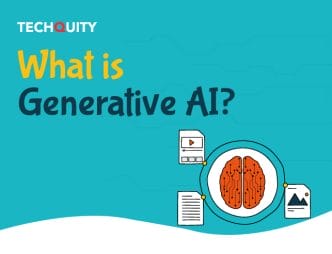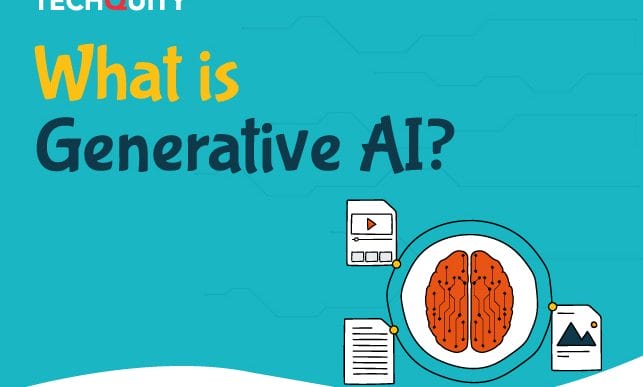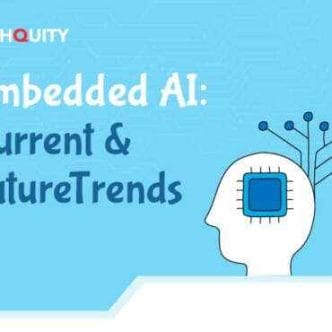In 2018, Amazon opened its first Artificial Intelligence (AI)-powered store called Amazon Go. In this futuristic store, you can walk in, grab whatever you need, and “Just Walk Out”! The store charges the items to your card, and you receive the receipt within a few minutes. All credit to Artificial Intelligence – embedded AI, to be precise.
At a time when most of us are still coming to terms with the rapid ubiquity of AI, the idea of Embedded AI might sound overwhelming. But let me break it down for you.
What do you think is the most exquisite machine ever created? It’s the human body. Each muscle and each joint is so carefully designed, and everything comes together to run like clockwork. You step out in the sun, and the body temperature rises. In response, you start sweating, which cools you down. Notice what happened. You didn’t have to send information about your body temperature (data) to someone who then switched on a fan to cool you down. The body managed the entire process internally, based on the data it collected, and activated a mechanism to cool you down.
This is precisely what Embedded AI does.
Embedded AI is deep machine learning applied at a device level. For example, in the Amazon Go store, it’s not simply a matter of guessing who took what kind of item – it’s a mix of different AI techniques such as sensor fusion, person detection, object recognition, and activity analysis.
Embedded AI: Artificial Intelligence … and Some More!
Most of us are already familiar with AI and how machines, computers, and software can imitate human problem-solving and decision-making. Embedded AI takes things up a notch using specialized hardware systems, like sensors and microprocessors, so it can operate independently, without relying on the cloud for data processing. This means it can give you predictive and reactive results in real time, based on the information it collects.

Why Should You Integrate Embedded AI into Your Business?
Embedded AI offers several benefits to businesses compared to conventional solutions across all industries.
Economics
Cloud-based solutions are still expensive, given the data transfer required from the device to the cloud and vice versa. Deploying embedded AI overcomes these difficulties, since there is no communication with the cloud. The device itself is capable enough to process and train the AI models. The result? A significant cost reduction.
Privacy
Sensors and recording devices deployed at the edge generate sensitive and vulnerable data that can pose serious privacy threats if shared across multiple layers of the internet. However, processing and storing these sensitive data on the device could effectively lower the risk of a privacy breach. Thus, the whole system becomes more trustworthy.
Latency
Deploying AI in embedded systems reduces latency. This is because sensor data is processed locally instead of being sent to a remote location for computation. This is crucial for real-world applications requiring instantaneous AI solutions. For example, quick reactions for obstacle detection in autonomous vehicles.
Reliability
Local data processing in devices diminishes faults and reduces downtime — a vital asset for specialized equipment in industries and critical devices on which users heavily rely. Embedded AI solutions prove superior in this aspect compared to traditional computing solutions. Their ability to process data locally makes them more dependable, durable, and less prone to errors.
Bosch: A Case Study
To understand the real-world use case of Embedded AI, let’s take the example of Bosch’s Digital Twin technology. It is an AI-powered solution that simulates and generates predictions to enable judgments and aid the digital management of industrial assets. By predicting problems, leveraging automation, and recommending solutions, the platform helps reduce maintenance costs and downtime while improving business margins and overall equipment effectiveness.
In short, when you have a Digital Twin in a manufacturing environment, your machines start speaking to you. With this, you are evolving your manufacturing into smart manufacturing through digital intervention. With the support of a Digital Twin, you can operate your plant efficiently and economically. As a result, manufacturing businesses can model and test every production component before it begins. This helps them to improve the production systems’ productivity, adaptability, and efficiency.
The Bottomline
Embedded AI brings us closer to a world where technology AI will be an integral part of our lives, enabling us to simplify everyday tasks and access valuable automated advice. As businesses look for ways to increase efficiency and customer satisfaction levels, integrating AI into products will soon become an essential component of success. With its vast potential for improving user-experience capabilities, Embedded AI is here to stay – illuminating our pathways into the future.
____________
Written By: Poorva Sagar














